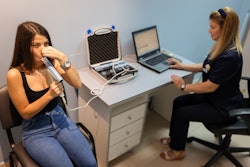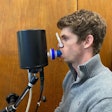
Researchers at the McGill University Health Centre in Montreal, Quebec, Canada, have found that some COPD patients are at risk of using inhalers that are not optimally suited to their breathing capabilities. This, in turn, could compromise the effectiveness of their treatment.
The study, “Peak Inspiratory Flow and Inhaler Prescription Strategies in a Specialized COPD Clinical Program,” was published in CHEST.
According to a news release, the real-world observational study measured peak inspiratory flow (PIF) in 161 outpatients at a specialized COPD clinic. The researchers found that 28% of those patients had a suboptimal PIF and 11.2% of them were using inhaler devices inappropriate for their measured PIF.
In addition to older age and reduced lung function, factors such as a low body mass index and female sex were associated with suboptimal PIF. Additionally, 31.1% of the patients were prescribed multiple inhalers or devices with differing operational techniques, which the researchers said can lead to confusion and improper use.
“Our findings highlight the importance of assessing PIF to ensure that patients are prescribed inhalers that they can use effectively,” said lead researcher Bryan Ross, MD, MSc, of McGill’s Translational Research in Respiratory Diseases Program.
Dr. Ross said another major finding in the study was only 8.4% of men had a suboptimal PIF compared to 48.7% of women.
“By tailoring inhaler prescriptions to individual patient profiles, we can enhance treatment outcomes and reduce the risk of exacerbations,” he said.
The next phase of the research involves a prospective longitudinal study called the Canadian Exacerbations of COPD Trial (CAN-EXACT). This study will follow patients with COPD who are at high risk of acute exacerbations and will track changes in their PIF over time during hospital stays and at home. The goal is to better understand how PIF fluctuations relate to clinical outcomes.






















